Calculus for Kids May 8, 2015 (Fridays)
This is a story about the fifth and final meeting of the Fridays session of our spring math circle. At the previous meetings, children claimed you can’t divide by zero, and Maria promised to show them how next time.
“Wave at me if you have divided by zero!” – several parents did. Then, “Children, wave at me if you believe it’s possible to divide by zero” – some do, some don’t. Hannah: “I believe my mom!” Maria: “And now wave if you think dividing by zero is a bad idea.” Offer people funny or interesting multiple choices, so however they “vote” they feel good about their chosen option.
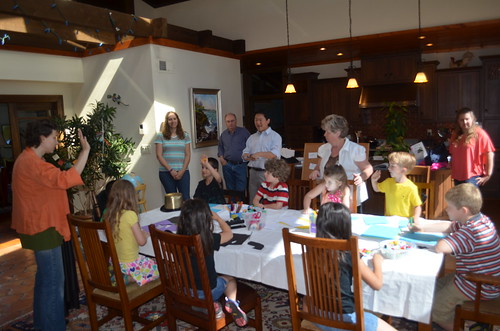
Maria asked 3 children to come forward to be her “math magic” apprentices. But if they aren’t into magic, just calculus apprentices. Maria and Amy are helping them with apprentice capes. Usually we pretend-play without prompts, but we wanted to play this up a bit.
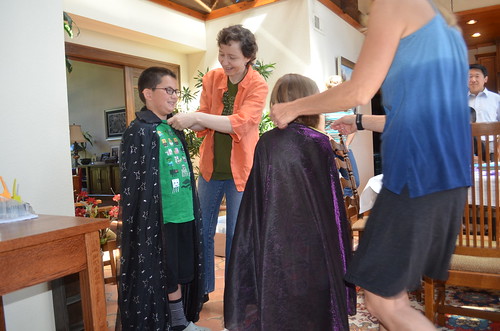
Maria the magician and her three apprentices are warming up for math magic.
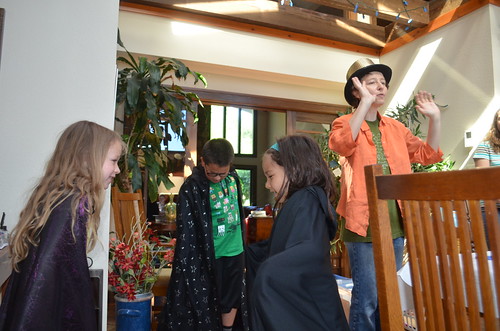
First, grab 6 pieces of paper. Let’s think: how many groups of 2 do you have? 6:2 = 3. Children demonstrated, each with 3 stack of papers with 2 pieces in each.
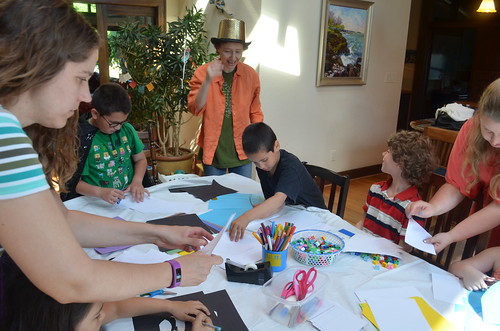
Then we modeled 6:3 (2 stacks of paper with 3 pieces in each) and finally 6:6 (just 1 stack). Note that adding 0, dividing by 1, dividing the number by itself, and other “border cases” should not come as your first example.
Then we modeled the same question about parts (fractions). How many halves are in three pieces of paper? Six. Take one large piece of paper. How many halves are in it? Two.
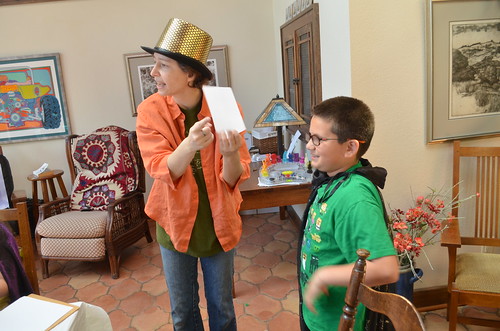
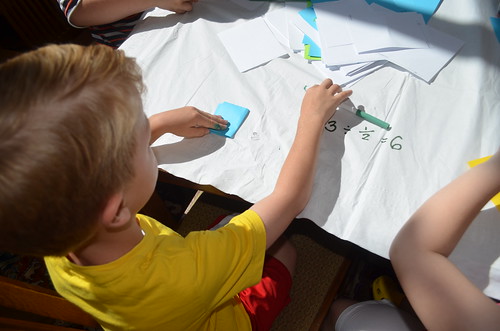
And then we started a series of division, modeled by folding the large piece of paper. When you describe it in words, it’s messy, but imagine words only following the play. Words were only in the background of paper-folding. Even the youngest in the group loved folding their papers again and again.
- How many halves are in it? 2. Dividing 1 by 1/2 gives you 2.
- (Fold again). Now you get 4 parts. That’s because dividing 1 by 1/4 gives 4.
- (Fold again). Now you get… How many parts? (Some thought 5, because it’s the next number after 4, some 6, because we had 2 and 4 before and they skip-counted, and some thought 8.) Count! You get 8 parts. That’s because dividing 1 by 1/8 gives 8.
- (Fold again…)
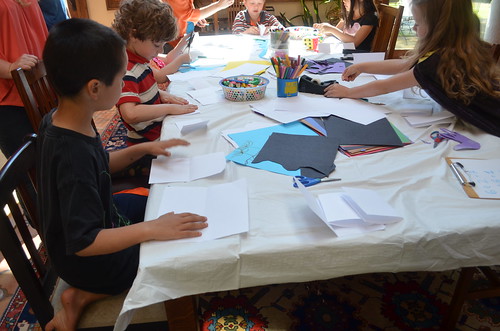

Priyesh: “After 64, you can’t fold the paper anymore; it’s impossible!” Priyesh was squishing the folded paper tight to demonstrate.
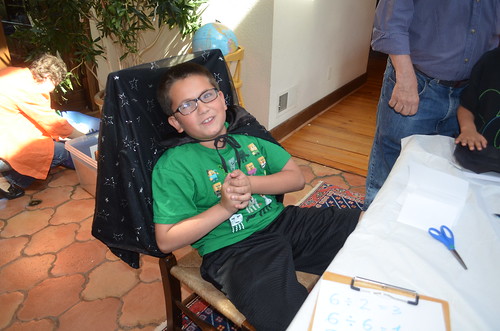
Charlie’s trying to make that last fold happen by using his teeth.
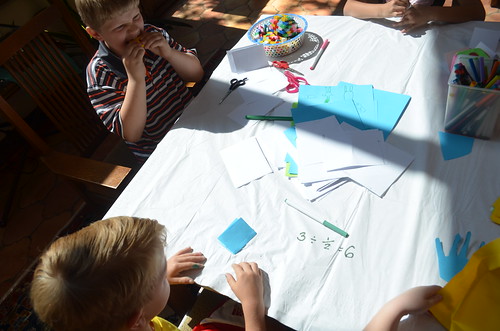
Charlie: “Ah-ha! I did it!”
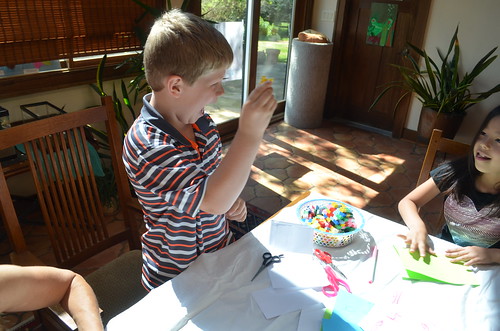
After the fold, Hannah and Michele are counting the squares together.
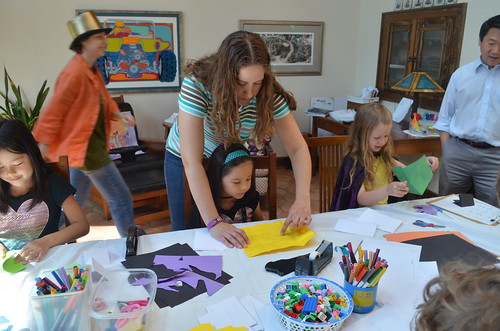
Hannah is tracing the fold lines, while Serrin is numbering parts on her paper.
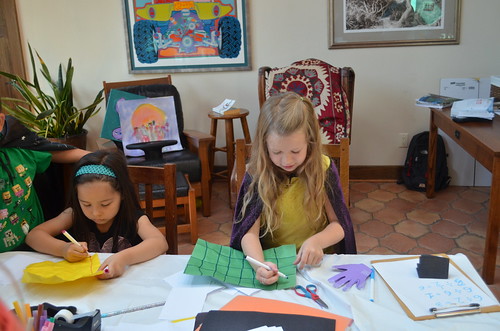
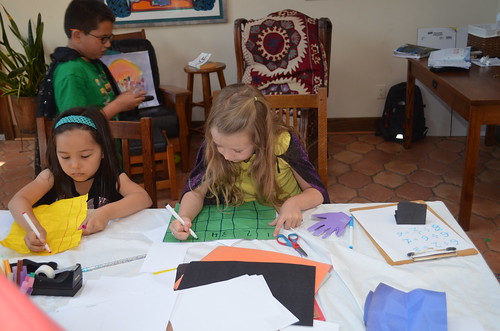

Small circle time. The apprentices are sitting next to each other. Maya joined Priyesh under the same cape, and Serrin is rescuing Maya from the bright sun.

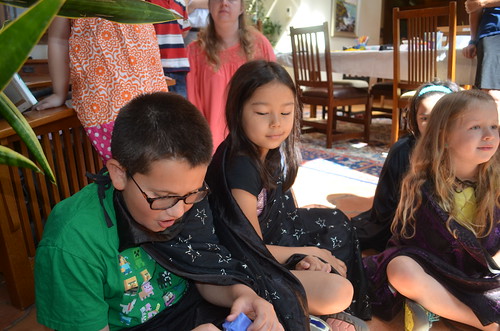
Math faces: children are following along the story of paper-folding and fractions they’ve just experienced for themselves.
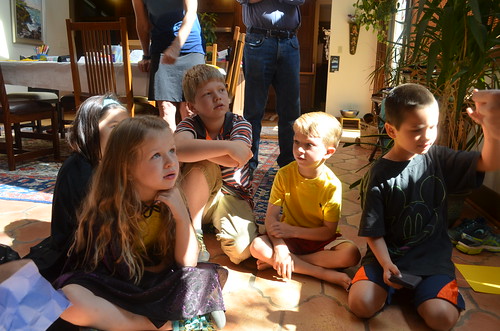
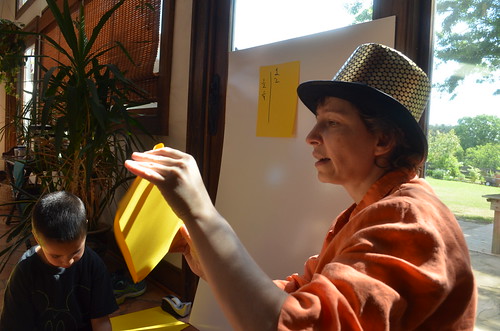
As we fold: 1, 2, 4, 8 pieces… Each 1, 1/2, 1/4, 1/8 as large as the whole paper…
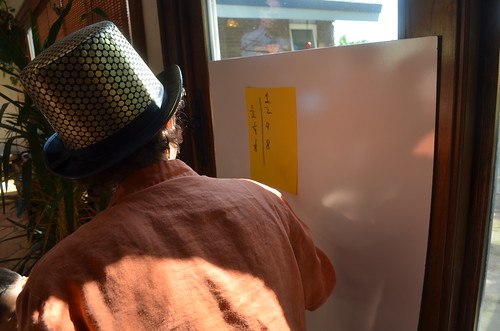
Serrin the apprentice represented the number of pieces (1, 2, 4, 8…) and Hannah represented the size of each piece (1, 1/2, 1/4, 1/8…) As Hannah got down to show pieces getting smaller and smaller, Michele lifted Serrin to show the number of pieces getting larger and larger… “To infinity and beyond” as the saying goes.
“Anthropomorphic personification” is the fancy term for pretend-playing your mathematics with your own body. As you can see, children enjoy it very much. This is also one of the best ways to learn and to remember. Our minds have very powerful mechanisms for dealing with people and relationships.

One enthusiastic and dedicated mom needs to catch her breath after all the heavy lifting! What wouldn’t she do to help children learn?
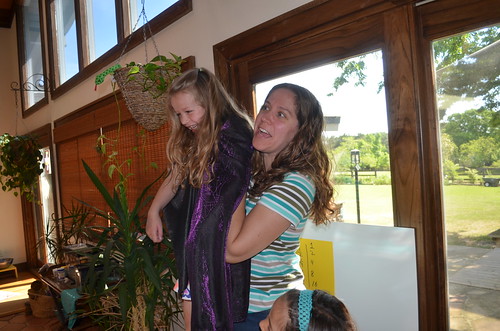
Maria also used her hands to show the ratios and relationships between the size of the fraction you divide by (smaller and smaller) and the result of the division (larger and larger). Note how many ways we used to explore the same thing: paper-folding, heights of children, the distance between hands, words, and written symbols. Three to five different ways work well for new topics. As you explore your topic in depth, create more and more representations!
Next, Maya and Priyesh represented the numerators and denominators of our changing fractions, since they were together under the same cape. A fraction is one number, but it comes in two parts.

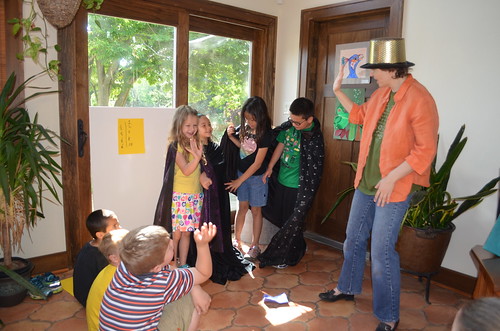
Maria is talking with Julianne after the fraction activity. Julianne is telling her own story of the experience.
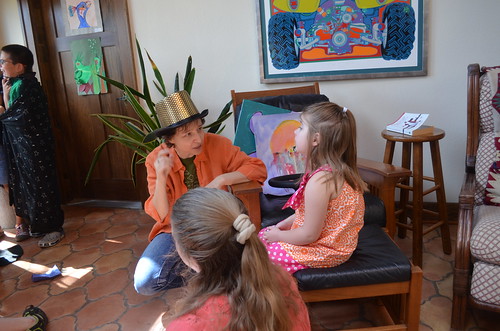
(Mad-Mathematician-Magician) Maria made division by zero madly magical – with much help from the apprentices!

So what do you get when you divide by zero? Children made up their own hand or whole-body symbols for infinity. You can see three or four different versions. Creating symbols is a big part of mathematics. There are usually several different ones, for example, / and : for division.
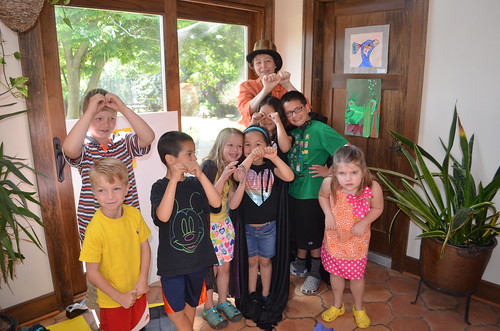
Silly faces and infinity!

Back to the table …
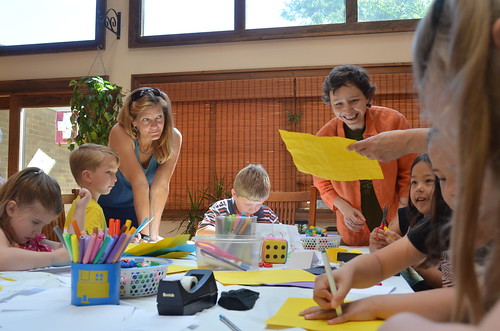
Maria helping Maya with her project: making curves and 3D structures out of fan-folded paper.
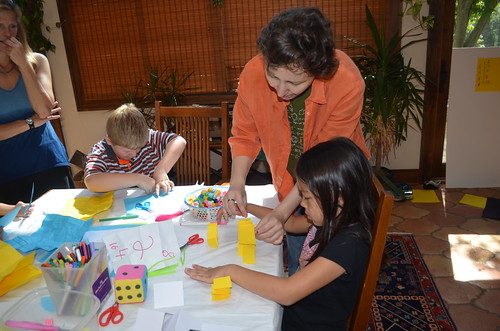


Maria is about to represent derivatives (slices) and differentiation (taking apart) by cutting an apple.
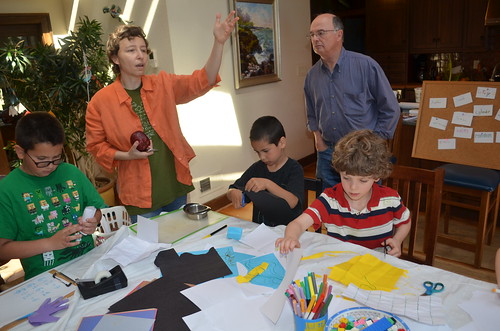
Apple cut in half horizontally in the middle; “What shape would you see? Circle? Cylinder in 2D or 3D? Or an approximate (calculus) circle?
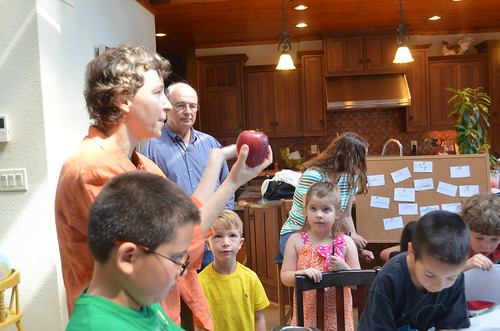
Also, what shape will that center piece of the cutter make? “A cylinder!” – say all children. Then one voice corrects, “Two halves of the cylinder” – someone remembered the apple is already sliced in half.
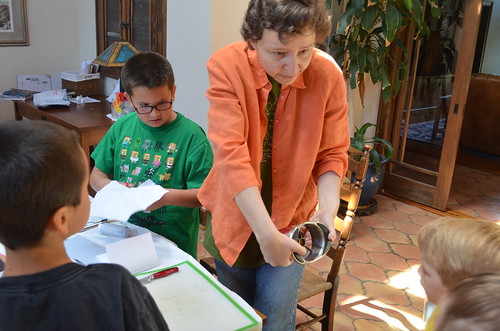
Modeling a cylinder out of paper while we are at it!
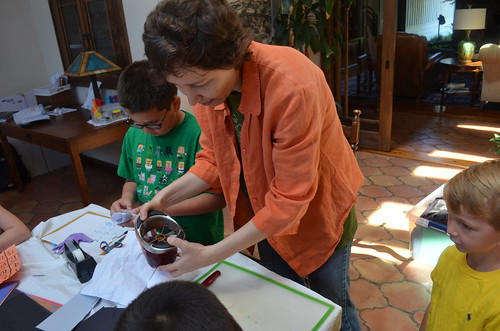
And after we slice (derive), we can assemble (integrate) back again.
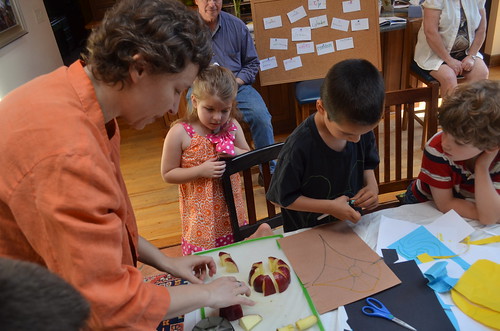
Younger children – Owen, Julienne, Eashan, and Jake – are focusing on the “integration” of the apple. Parents sometimes worry that, to quote a favorite movie, “You keep using that word. I don’t think it means what you think it means!” – that we or the children stretch the meanings of math terms too far, or apply words inappropriately. Owen told Amy he needs to integrate his sock drawer, whatever that means.
But words end up meaning something to children. Five-year-olds have no need for high precision: they are not landing spaceships on Mars or building reliable bridges. They are just exposed to ideas. As a parent said recently about her early math games with her mom, “I don’t remember ever not understanding about negative or complex numbers.” We do want that feeling of happy familiarity. The precision and depth of understanding will grow with time.
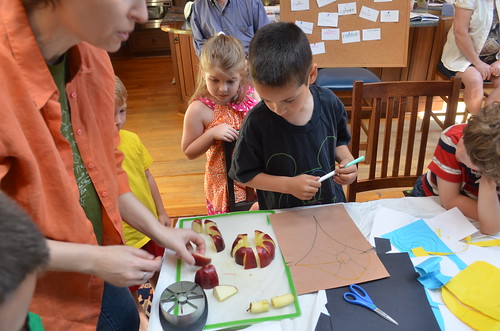
Eashan is modeling the slicer in 2D. Check out the accuracy: there is a circle in the middle and the same number of sections.
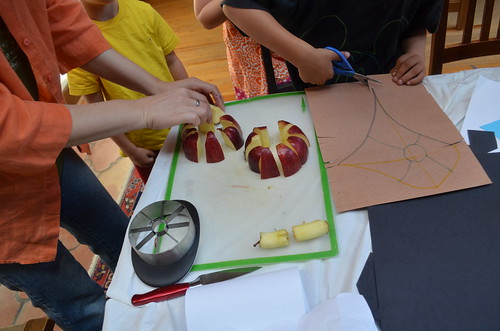
Moving onto the next activity. A thread from a yarn is 1D (well, a model of a 1D object – like everything else in the physical world, it’s really a 3D thing).

Meanwhile, Charlie is determined to fold the most squares possible. Children sometimes continue their projects while the group moves on.

The final result: Ta-da! 390 squares! Maria: “That would be an interesting power of 2. But he used different folds.”
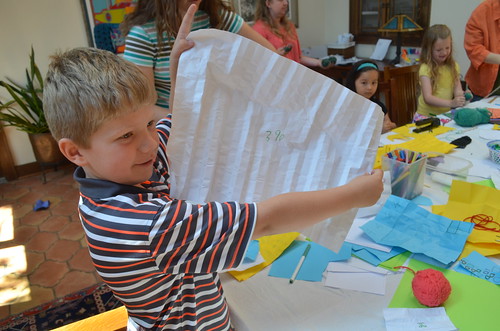
Pom-poms embody the idea of integration. Wrap the yarn at least 30 times around your hand (making a 2D surface out of 1D lines). Then tie it across the lines, cut the lines on the opposite side from the tie, and fluff up into a 3D shape.
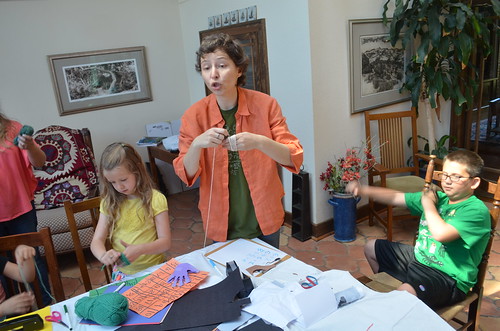
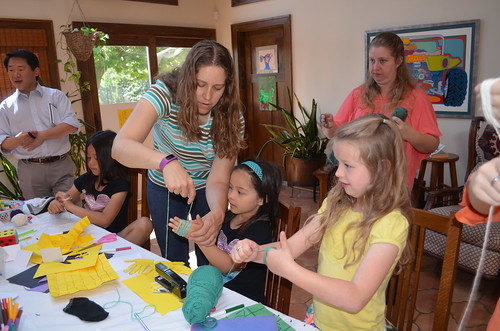

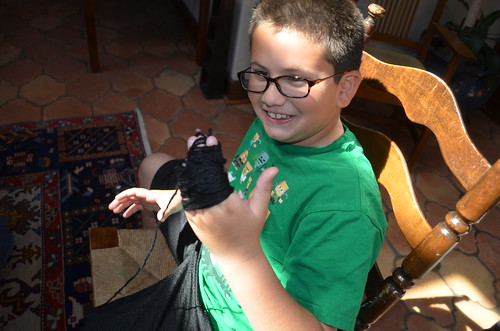

Integrate into a toupee?
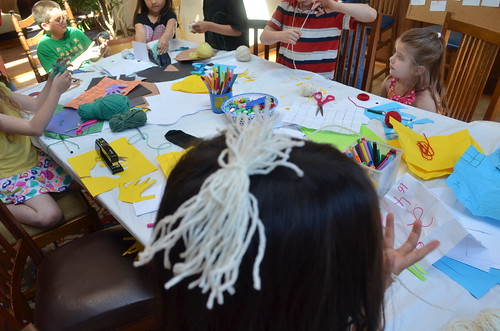
Children are creative: how about a mustache for Hannah?

The Flying Spaghetti Monster lands on Serrin’s head.
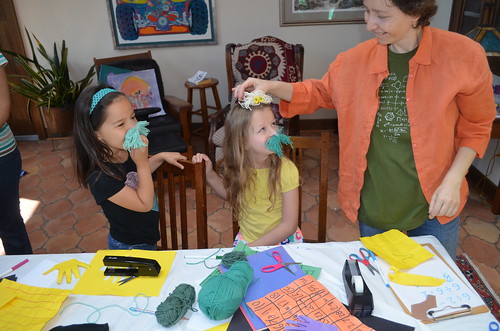
How charming, mustache ladies!

Evil Mustache Priyesh is threatening the Flying Spaghetti Monster.

Meanwhile, Eashan is still at it integrating/deriving in 2D.

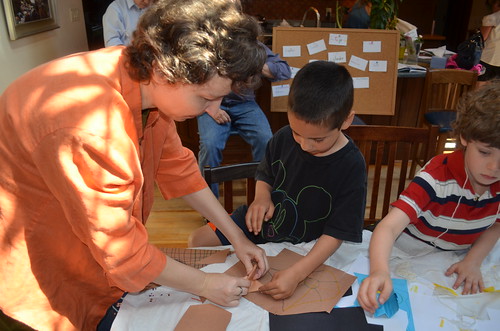
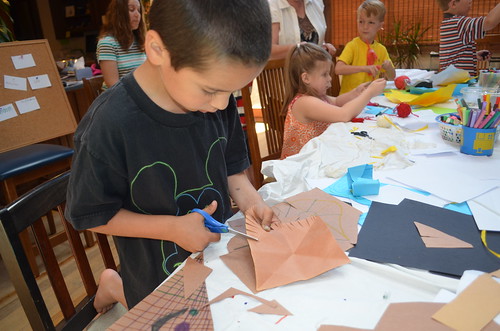
Julienne is making a 3D bird’s nest. She is very much into nature and modeling natural objects. Children often go through periods where everything must be about a single topic: horses, Star Wars, the nature, and so on.
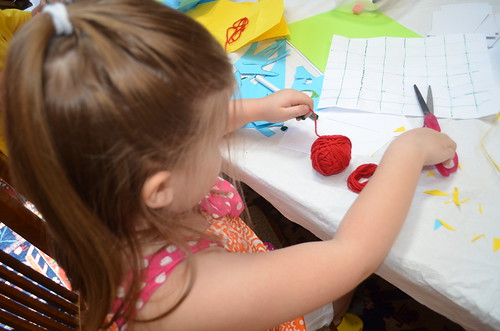
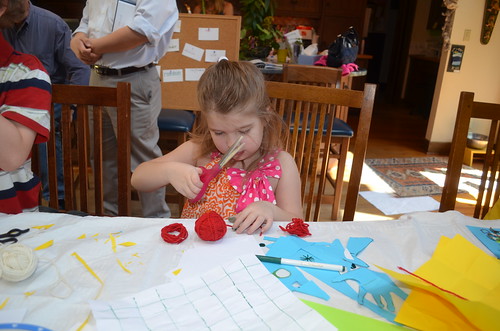
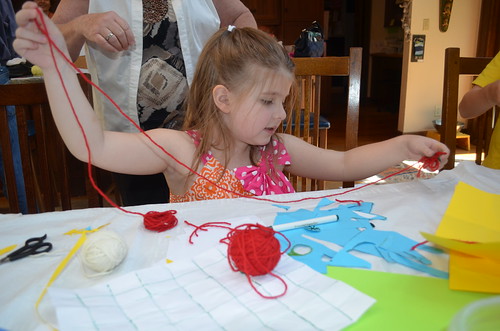
Check out Owen’s 3D mustache…


…And Jake’s 1D looong beard!

…And Charlie’s fancy, mostly flat beard and fluffy toupee.
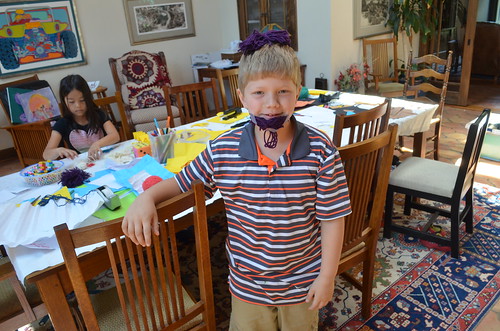
Our final collection of Math Words. Some are made in multiple colors because several children wanted to add the same word. Each child selected a color and wrote a part of that word. “Make math your own!”
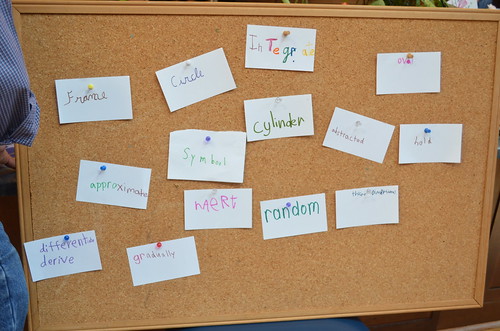
Lastly, the group is gathered to watch the trailer of “Flatland.”

After the video, the grown-ups stayed around for some math talk, while children played outside.

Photos by Erin Song, captions by Erin Song and Maria Droujkova, Math Spark by Kalid Azad, Shelley Nash, and Maria Droujkova, edited by Ray Droujkov.
Related Posts
Posted in Make







Thank you for posting the “Inspired by Calculus” math circle series. I have wanted my children to participate in a math circle for over a year, but I haven’t been able to find one in my area. When I saw these posts, which cover 5 weeks, I decided to form a math circle, modeled after what I read here. I could manage a circle for 5 weeks, I thought. We just finished our second meeting, and it was great! The kids are enjoying the introduction to calculus, they are getting the idea of derivatives and integrals as explained (cutting a thin slice and putting slices together), and they are creating some great examples of 2D and 3D objects. My favorite quote: “I am going to make an intricately-designed something.” Love it!
Thanks for reaching out to us with your personal math-inspired story. It’s encouraging and exciting to hear from a mom making math circle possible for her children after witnessing the posts. Come talk to us when you are available we’d love to hear how the circle is going and happy to answer any questions you might have.
Cheers and happy “Make math your own to make your own math!”
Lydia, do you have stories of your circle in some form? So glad your students are learning, and that you’ve shared this comment. It’s good to know you felt inspired and acted on it!
I can type my notes up and email them to you. It will take a few days. I will post here anything that I think might be helpful to others.